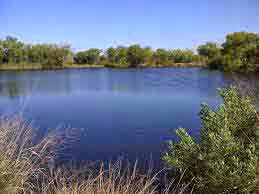Apna Talab Abhiyaan - aims to improve groundwater recharge in Bundelkhand
The 'Apna Talab Abhiyaan' programme promotes the building of private talabs on peoples'

 Charkhari,
a princely state of India in the colonial period was once a beautiful settlement
founded by Saurabh Singh Bundela, a Rajput King. Acceded to India
post-Independence, the town is now located in Mahoba, Uttar Pradesh. The place
was home to intricate water management systems in the past. According to the
settlement records for the Bundelkhand region, the region had numerous talabs-about
962 during the Chandela period-of which only 421 remain today. These old talabs
(water bodies) showcase the skill of the builders of this period.
Charkhari,
a princely state of India in the colonial period was once a beautiful settlement
founded by Saurabh Singh Bundela, a Rajput King. Acceded to India
post-Independence, the town is now located in Mahoba, Uttar Pradesh. The place
was home to intricate water management systems in the past. According to the
settlement records for the Bundelkhand region, the region had numerous talabs-about
962 during the Chandela period-of which only 421 remain today. These old talabs
(water bodies) showcase the skill of the builders of this period.
Bundelkhand has always had a water problem and regularly faces drought. However, the traditional storage systems, the Chandela and Bundela talabs, used to even out the water availability enabling people to grow two crops and also secure their drinking water needs. The Chandela talabs of the region were built by halting water flow in rivulets through the construction of huge earthen embankments. Hills with long stretches of quartz reefs running underneath them, acted as a natural groundwater barrier helping to trap water. These talabs had a convex curvature somewhere in the middle of the embankment. Lime mortar was used in the stone masonry work, which has made them quite durable.
 They
were often accompanied by temples whose architecture was inspired by the
Khajuraho period. Ram kund and Suraj kund are two famed Chandela period talabs.
The water architecture is elaborate and they are lined with granite slabs in a
reverse pyramid shape. In some cases they were even accompanied by dargahs
bearing Islamic
They
were often accompanied by temples whose architecture was inspired by the
Khajuraho period. Ram kund and Suraj kund are two famed Chandela period talabs.
The water architecture is elaborate and they are lined with granite slabs in a
reverse pyramid shape. In some cases they were even accompanied by dargahs
bearing Islamic
 architecture
(Quila Mismar in an old Chandela fort). These may have been built after Mahoba
became a part of the Delhi Sultanate. The elaborate structures were meant to
show off the glory of the king who built them.
architecture
(Quila Mismar in an old Chandela fort). These may have been built after Mahoba
became a part of the Delhi Sultanate. The elaborate structures were meant to
show off the glory of the king who built them.
The Bundela talabs were bigger in size and had solid steps that led to the water. The Bundela kings who came later used lime and mortar masonry. These talabs were bordered by steps, pavilions, chabootaras and royal gardens. Locals say that the Chandela talabs were simpler and cost effective when compared to the Bundela talabs.
The state used to maintain the larger talabs while smaller ones were managed by the community. Community talabs were built by local people through shramdaan or voluntary labour. Some prosperous families also took this up as it was considered an act of piety. Stories abound that in the seventeenth century when the son of Chhatarsal, the then ruler of Bundelkhand found treasure, he was ordered by his father to use it for renovating old talabs and constructing new ones but today these talabs are witness to state and community apathy.
Courtesy : India Waterportal
- Anonymous's blog
- Log in to post comments